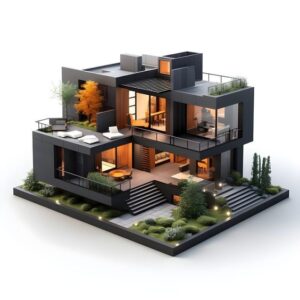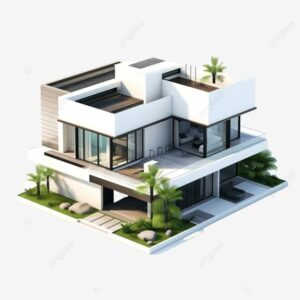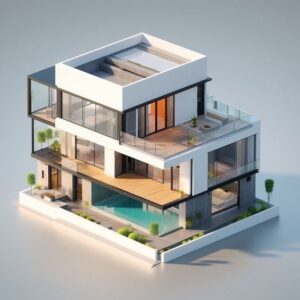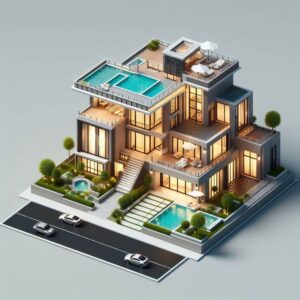

About Future Stiles
Future Stiles is a relatively new player in the tile industry, but it has quickly gained recognition for its innovative and modern designs. The brand focuses on merging cutting-edge technology with artistic craftsmanship to create unique and visually appealing tiles.
Latest Post


3×6 Inch and 75x150mm Tiles Size and Design in 2025

1200x1800mm and 48×72 Inch Tiles Designs in 2025
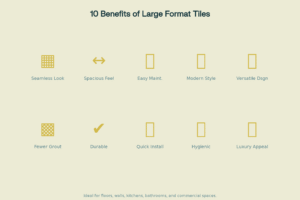
Benefits of Using Large Format Tiles in Modern Interiors

Top Tile Trends for 2025: Colours, Textures and Finishes
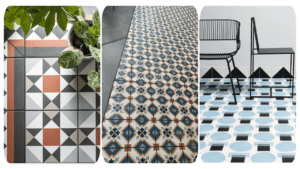
Concrete Tiles, Cement Tiles, and Cement Tiles for the Floor in 2025

Black Tiles Design: Modern Black Tiles Living Room
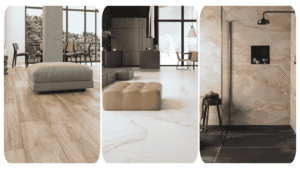
Matte Finish Tiles: A Modern Touch of Subtle Elegance 2025
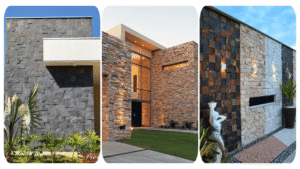
Front Elevation Tiles Design: Stylish Elevation Tiles & Affordable Prices
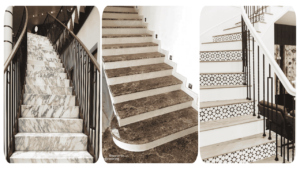
Top 30 Rough Tiles for Stairs Designs in 2025
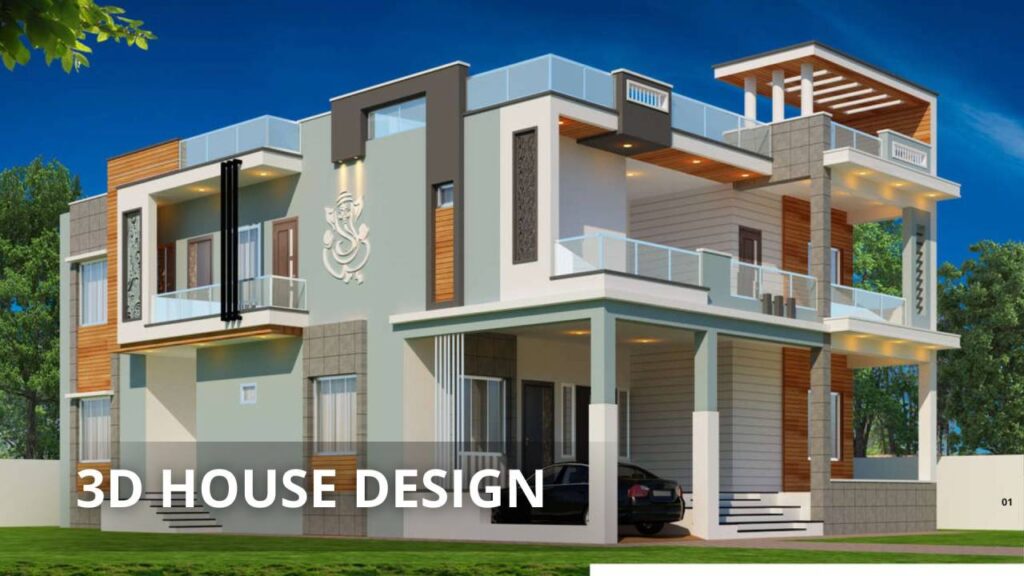
3D House Design in 2024: Revolutionizing Home Architecture
- Futurestiles
- August 26, 2024
- 1:15 pm
The advancement of 3D home design has brought about a paradigm shift in the architecture and construction industries. The advent of technology that allows people to visualize, change, and adjust their home designs before any single brick is laid is changing how we think about and build homes. This new house design approach is more precise, detailed, and adaptable for homeowners and professional builders.
What is 3D House Design?
3D house design involves creating real-life representations of a house’s architectural structure using three-dimensional modeling software. Unlike conventional two-dimensional blueprints that can be seen only from above on paper screens or boards, three-dimensional models show an entire building from all directions. Such information as general structure, arrangement, or detailing up to the smallest things like furniture arrangement, lighting fittings, or textures are included in this category. Consequently such kind of virtual model provides grounds for interactive exploration and detailed visualization of the whole property.
The Advantages of 3D House Design
Enhanced Visualization
One important advantage of 3D house design is the ability to see exactly what it will look like as the final product. Homeowners and architects can walk through virtual spaces, understanding how rooms will look and feel. The proportions are better understood through this experience as well as the flow between rooms;
Improved Communication
In addition, 3D house design has an important advantage of being able to see the final result of a house. Homeowners and architects can virtually explore rooms thereby comprehending how they will appear in real life. This experience helps understand proportions as well as transitions between spaces.
Precise Planning
To design a house that considers every small aspect of it from overall structure to little details like fittings and finishes need for flow is very crucial in 3D modeling. It minimizes errors during construction thus saving time and money.
Cost and Time Efficiency
3D House designing detects potential problems at an early stage before putting them into practice. Additionally, contractors get approvals faster due to the easily understandable project as opposed to projects having to go through many revisions or alterations.
Customization and Flexibility
The freedom provided by three-dimensional design tools is incomparable. Property owners can try out different arrangements, designs, and color schemes instantaneously observing their choices’ consequences. As such, the last plan agreed upon will be entirely consistent with the client’s needs and lifestyle.
The Process of Creating a 3D House Design
There are many steps involved in creating 3D house designs each with its own specialized software and skills needed. Here is a quick rundown:
Initial Consultation and Concept Development
The process begins with the first consultation between the architect and the client. At this stage, the architect collects information about the client’s needs, preferences, and budget. They form a basis for a conceptual design that includes basic floor plans and rough sketches.
3D Modeling
After deciding on a concept, the architect then uses 3D modeling software to produce a detailed virtual model of the house. The model can also contain exterior and interior designs including landscaping as well as furnishings. Advanced software allows for precise representations of materials, lighting, and textures, giving it a realistic look.
Virtual Walkthroughs and Adjustments
Once construction is finished and all major changes are done to completion, clients can take virtual walkthroughs of what their future home will look like. Such an exercise helps in making adjustments or refinements where necessary. For example, clients can move walls around, change window sizes, or even try out different paints and see how they impact on overall design.
Final Design and Documentation
Whereby this happens and customers are happy with everything that has been changed within the building structure, a final 3D design shows any detailed construction documents used in its preparation. These include floor plans among others which are derived from 3D models (Wambugu & Odour 2014). This detailed document makes it easy for anyone interested in constructing this house to have all it takes.
Software Tools for 3D House Design
Different software tools can be used in the creation of 3D house designs, each of which has a variety of features and capabilities. Some of the most common ones are:
- SketchUp: Famous for its user-friendly interface, SketchUp is the top choice both for professionals as well as hobbyists. It comes with various tools that will help you design detailed 3D models together with an extensive library packed full of ready-made objects.
- AutoCAD Architecture: This is an AutoCAD version created specifically for architectural design; it has advanced tools that enable the creation of highly detailed 3D models and construction drawings.
- Revit: Revit, developed by Autodesk, is a forceful Building Information Modelling (BIM) tool that creates highly detailed three-dimensional models with structural, electrical, and plumbing systems hence suitable for complicated projects.
- Blender: Besides being mostly used for three-dimensional animation and rendering purposes, Blender’s sophisticated modelling tools have made it to become a good option for architectural designs.
- Chief Architect: The program is mainly created to fit in residential design. It incorporates strong features that let users create detailed 3D models including realistic materials and lighting simulation.
3. Focus on Lighting
Architects and designers use 3D house designing for a variety of applications, not just as a tool in the profession:
- Before starting construction work, homeowners can see exactly how their new home will look like. This helps to remove indecision or uncertainty and it guarantees that the project meets the clients’ aspirations.
- Plan Renovation: For renovations, 3D design enables homeowners to visualize changes before they are made for large-scale renovations with structural modifications.
- Market Real Estate: Real estate developers use 3D models to market and advertise their new developments and projects. By virtual tours derived from 3D models, prospective buyers may examine property remotely which makes selling-off plan convenient.
- It Helps In Interior Designing: Detailed plans for furniture placement, lighting, and decorations are created by interior designers using 3D modelling. These assist customers in visualizing how different elements can be combined into one space.
The Future of 3D House Design
Advancement in technology is a good sign that 3D house design has a bright future. Some examples are virtual reality (VR) and augmented reality (AR) which have already been integrated into the design process such that customers can experience their houses in an immersive manner. VR can offer complete virtual tours where users can engage with it, while AR may overlay digital models onto physical surroundings.
Furthermore, advances in AI have been simplifying the process of designing buildings. AI-driven tools may recommend design tweaks, optimize space usage or even create designs according to certain criteria, thereby improving the efficiency and personalization of this process itself.
Conclusion
The advent of 3D house design has transformed how we approach construction and renovation. It overcomes the limitation of imagination by way of detailed, accurate and immersive visualizations to make sure that the final product meets or surpasses expectations. 3D house design provides limitless possibilities for innovation, customization and creativity when you want to construct new homes, remodel existing ones or even just generate ideas on designs given that the technologies behind this field are still developing. The progress in technology will also determine how we plan our living spaces as well as build them.
